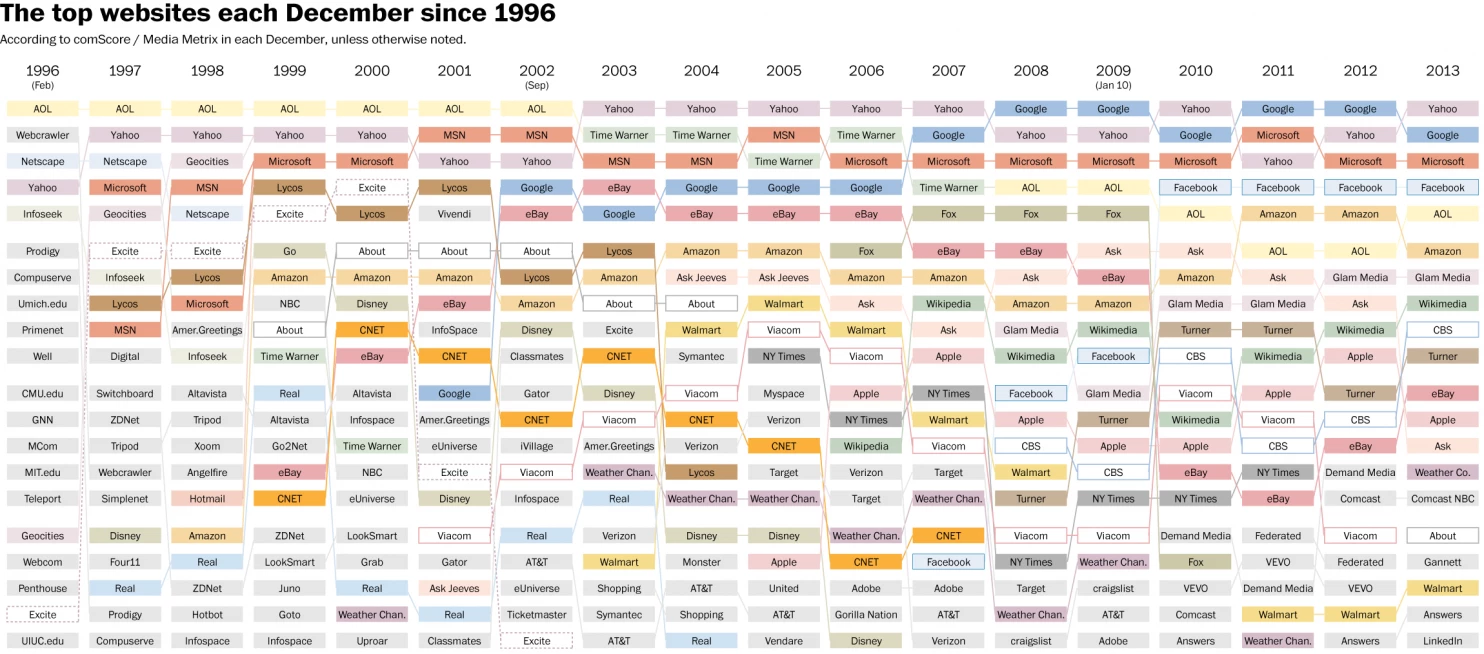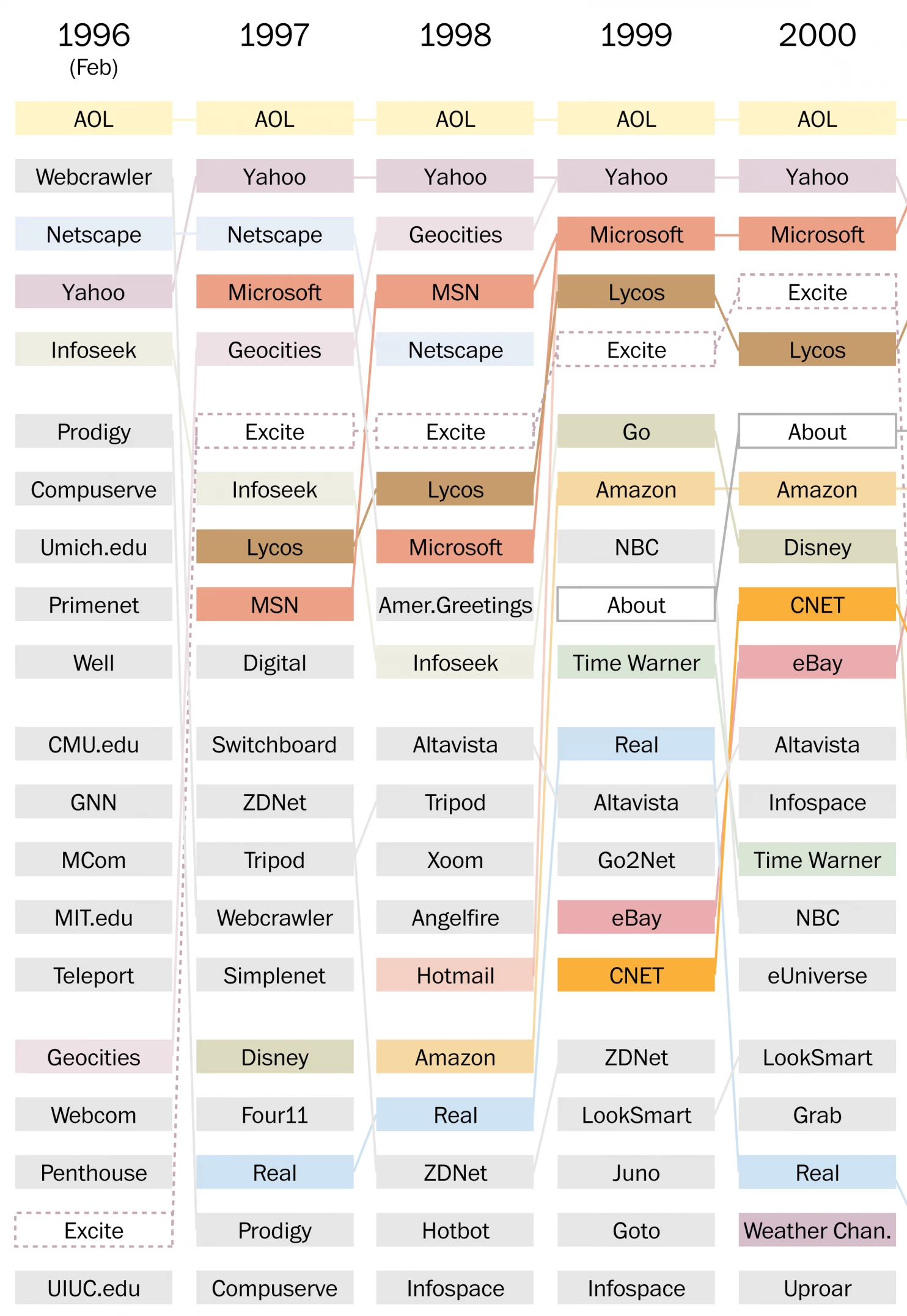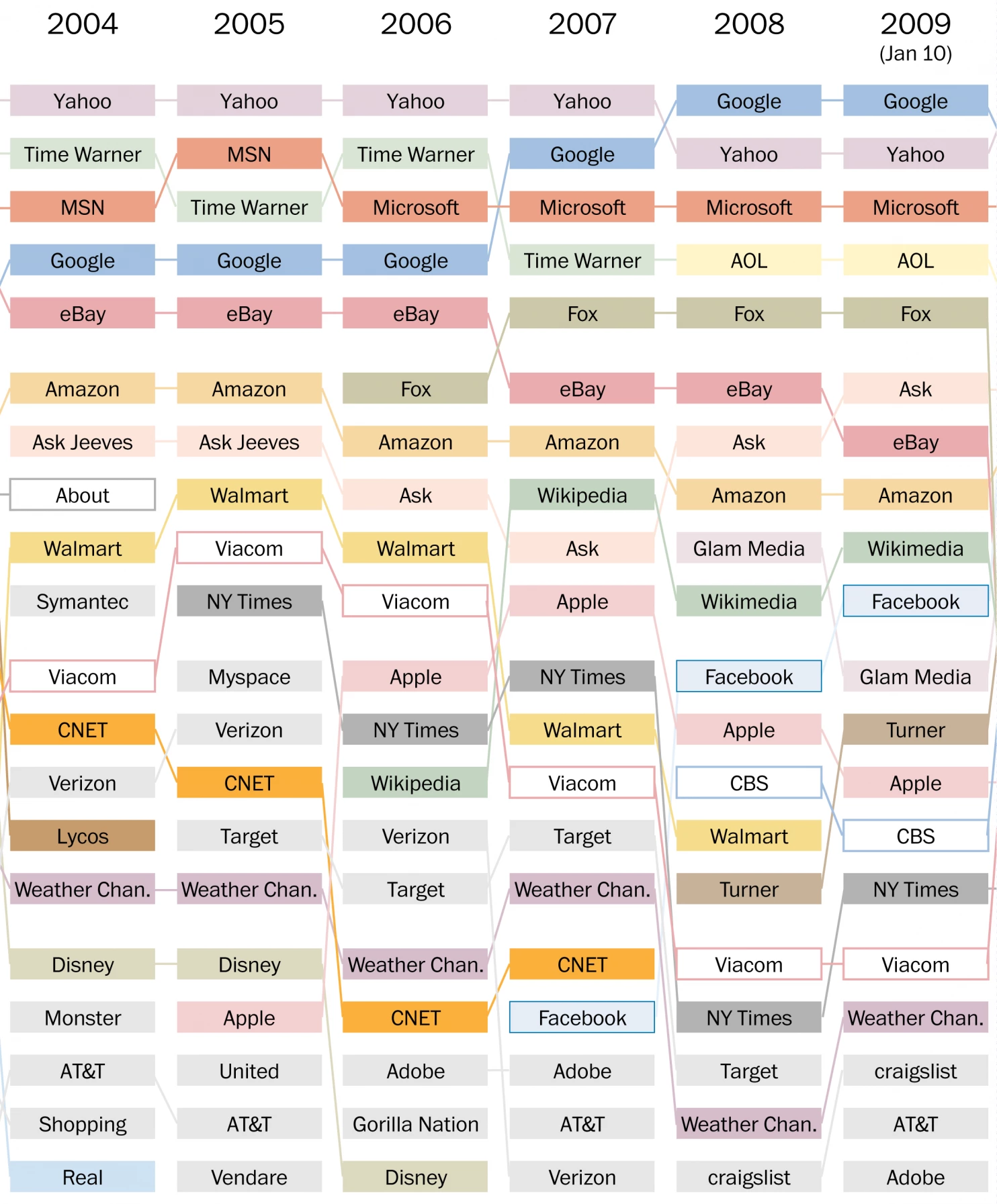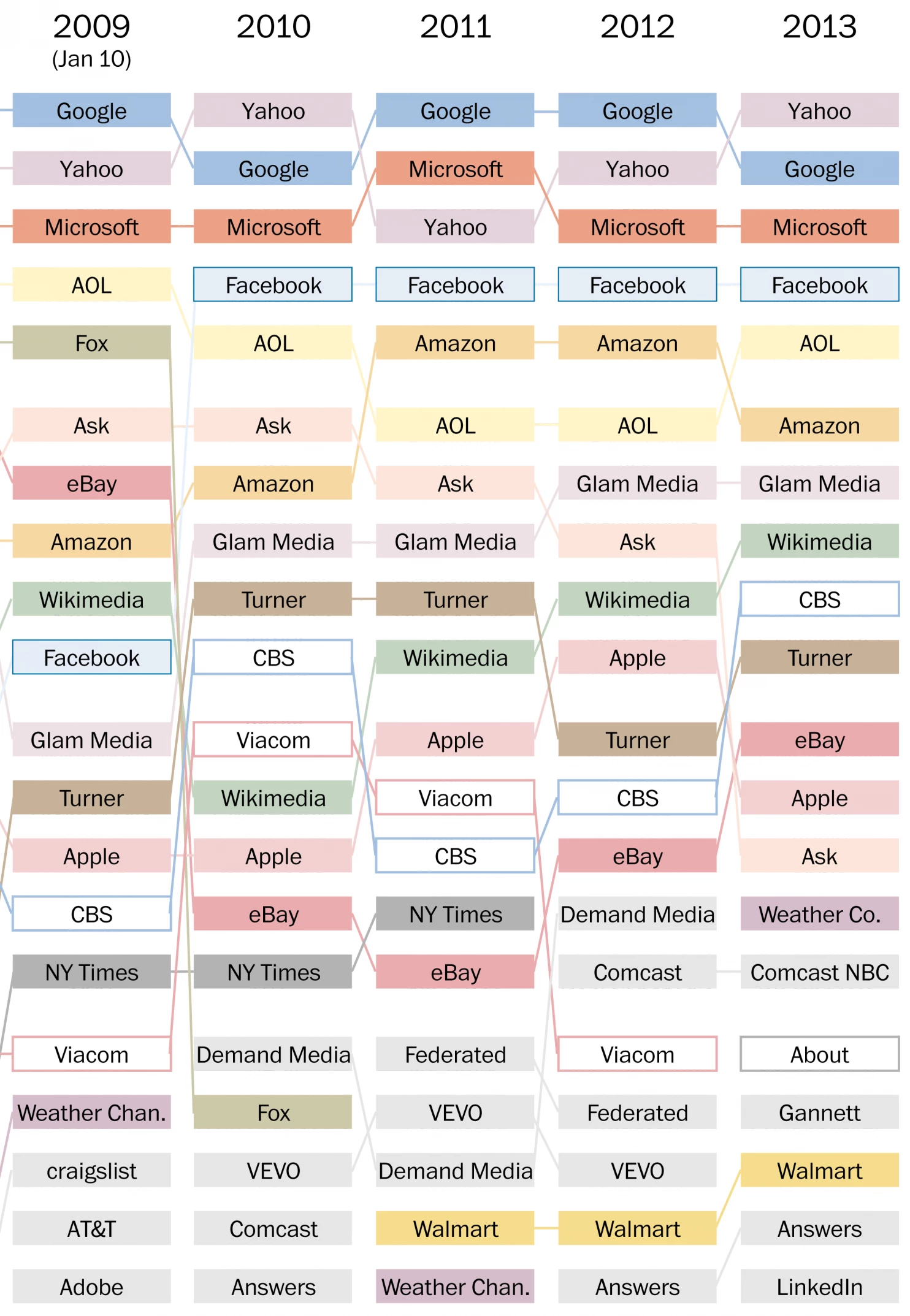FROM LYCOS TO ASK JEEVES TO FACEBOOK

Newsroom
From: The Washington Post
Our goal is not to confuse or alarm you, but we must, as agents of the news media, speak the truth. And so we say, with all due solemnity, that if it were 16 years ago, you would right now be reading this article at Excite.com.
That’s really one of the best case scenarios. You could also be at Infoseek, or Tripod (what) or Xoom (what?). Because the web in December 1998 was a much different, much lamer place.
We like to think of sites like Google, Facebook and Amazon as immutable — parts of the web as it exists now and has always existed. This is not the case, however. Sixteen years ago, only Amazon (the CEO of which owns The Post) was a popular site; it was the 16th most popular site on the web according to Media Metrix (which later was absorbed into comScore). Infoseek and Hotbot were more popular than Google (which, that December, looked like this) and Facebook (which didn’t exist).
Sites like AOL and Yahoo did exist — and were popular. But the easiest way to make that point is to share with you this graphic, which shows the 20 most popular sites in December of each year, according to comScore. More interestingly, what it shows is when certain sites became and then stopped being popular.
We will be the first to admit that this is too small to read (though you can click on it, which improves things). So we broke it out into smaller clusters.
1996 to 2000
This section of the graph displays the heart of the original dot-com boom, the era in which investors figured that the world couldn’t resist groceries delivered to ones home or pet supplies ordered online. How wrong they were!
The first year here is 1996, when the web was … young. Several of the top 20 sites were college sites, thanks to colleges having invested early in the internet. AOL and Yahoo were there too, as they have been ever since. Mostly, however, the list is garbage nonsense like “GNN” and “Teleport,” which we don’t even know what they are.
Notice the ascent of Excite and CNET. They’ll be interesting in the next part of the graph.
2000 to 2004
Excite plummets; CNET is bouncing around in the middle. (Stay tuned!)
EBay, you’ll notice, is in the top five, and Amazon is holding strong. Those paying close attention to the evolution of the media industry are currently nodding and saying, “Hmmm” suggestively.
What’s really interesting, though, is that top tier: Microsoft/MSN. Yahoo, after absorbing Geocities. And, out of the blue, Google — which replaced other search engines (Altavista and Webcrawler, for example) as the go-to for web users.
This is the natural point at which we note that comScore includes every site associated with a company. So Go and ESPN and so on are part of “Disney.” That holds for the rest of the listing.
2004 to 2009
This is the point at which things start to stabilize. In 2007, Facebook appears, thanks to its having expanded beyond only accommodating college students.
But the top tier, which includes Time Warner (after it absorbed AOL) and then AOL (after that collapsed) contains companies that largely occupy the upper levels today.
There are a lot of other ups-and-downs here. Viacom, Walmart, and Ask Jeeves/Ask are ones to keep an eye on.
EBay is starting to fade.
(Update: A representative of CBS e-mailed to note that the company purchased CNET (and its family of sites) in 2008, which explains its sudden disappearance. Consolidation of that kind has not been uncommon since 1996 — see also AOL/TimeWarner.)
2009 to 2013
Welcome to the modern era. Remember, this is data from comScore (links to the individual years are below). So other metrics may have other rankings.
We say that mostly because we have never heard of “Glam Media,” apparently the seventh biggest web network last year. Sure, why not?
But the top five continues to consist of the same sites: Google, Yahoo, Microsoft, Facebook and AOL. The interesting maneuvers are lower on the chart: Apple flitting around, and the appearance of LinkedIn, which we all hope doesn’t rise any higher. (Opinions expressed here are not necessarily those of people who are looking for work and therefore updating their LinkedIn profiles.)
2014?
What’s interesting about this data is that, despite its reflecting December (with noted exceptions), it’s pretty static. Walmart and Target don’t appear to do better because it’s the holiday season; Wikipedia (and Wikimedia, its umbrella organization) does fine despite school being out.
So what happens this year? We shall see. We do have a prediction though: Xoom is set for a comeback, even though it is now a money-sending site (?) instead of an “instant software source.”
You heard it here first.




